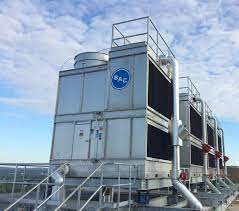Introduction:
Cooling towers play a crucial role in industrial processes, power generation, and HVAC systems by efficiently managing heat dissipation. These towering structures are a testament to engineering ingenuity, providing an effective and کولینگ تاور sustainable solution for maintaining optimal operating temperatures. In this article, we will explore the functions, types, and evolving technologies of cooling towers, shedding light on their indispensable role in various industries.
Functionality:
Cooling towers serve the primary function of removing excess heat from processes and equipment, preventing overheating and ensuring the efficient functioning of machinery. They achieve this through the process of evaporation, where warm water is circulated through the tower, allowing a portion to evaporate into the atmosphere. This process extracts heat and cools the remaining water, which is then recirculated.
Types of Cooling Towers:
- Natural Draft Cooling Towers:
- These towering structures utilize the principle of buoyancy to move air, relying on the difference in temperature between the ambient air and the warm air inside the tower.
- Natural draft cooling towers are often employed in large-scale power plants and industrial facilities due to their impressive cooling capacities.
- Mechanical Draft Cooling Towers:
- These towers use mechanical fans to draw air through the tower, enhancing the rate of heat exchange.
- Mechanical draft towers are further categorized into induced draft, where fans pull air through the tower, and forced draft, where fans push air through the tower.
- Crossflow and Counterflow Towers:
- Crossflow towers have water flowing vertically while air moves horizontally, promoting efficient heat transfer.
- Counterflow towers feature water and air flowing in opposite directions, maximizing heat exchange and maintaining a more compact design.
Technological Advancements:
- Cooling Tower Materials:
- Traditional cooling towers were predominantly made of wood, but modern structures often employ materials like fiberglass, concrete, and galvanized steel, offering durability and resistance to corrosion.
- Smart Cooling Towers:
- Integrating sensors, automation, and real-time data analytics has enabled the development of smart cooling towers. These systems optimize water usage, energy consumption, and overall efficiency.
- Hybrid Cooling Systems:
- Combining the benefits of evaporative cooling towers with dry cooling technologies, hybrid systems provide enhanced performance and flexibility, particularly in regions with varying climate conditions.
Environmental Considerations:
Cooling towers, while crucial for industrial processes, raise environmental concerns related to water usage and potential thermal pollution. Efforts are underway to address these issues through the implementation of water-saving technologies, improved heat exchange efficiency, and the use of alternative cooling methods.
Conclusion:
Cooling towers have evolved significantly over the years, adapting to meet the increasing demands of diverse industries. As we navigate towards a more sustainable future, ongoing research and innovation in cooling tower technologies will play a pivotal role in minimizing environmental impact while ensuring the reliable and efficient operation of industrial processes and power generation.
